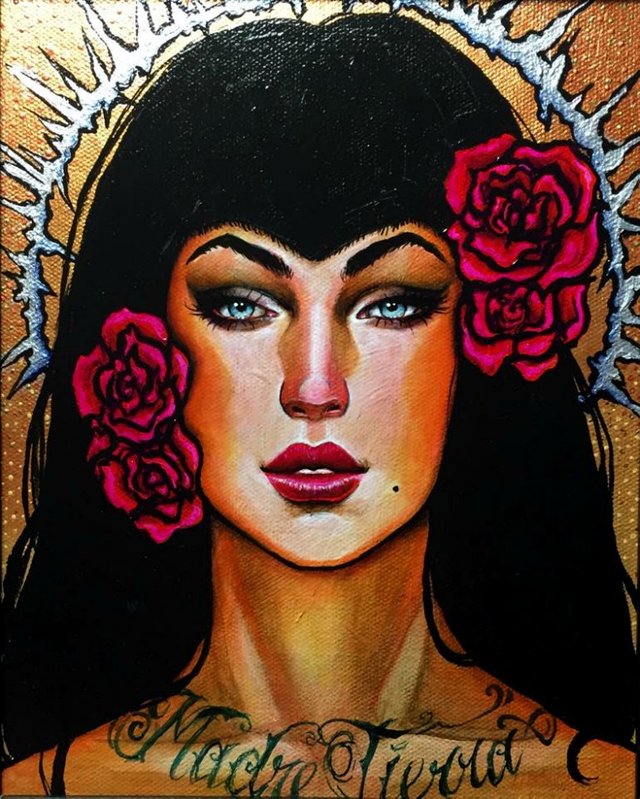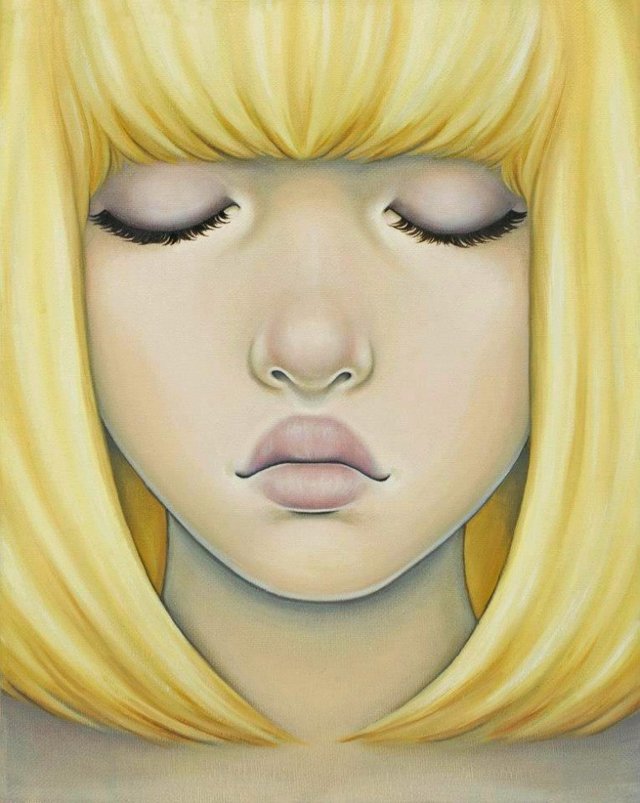Dealing With the "Business End" of Being an Artist
At the Red Dragonfly gallery, we have the pleasure of interacting with a lot of very talented artists.
Sadly, many of them have little or no familiarity with dealing with the "business end" of being an artist. Quite a few are of the belief that it's "not necessary" for them to know anything about business and that they are just artists "for art's sake"... but the mere fact that they have contacted us is a statement that they do want to "do" something with their art, aside from simply creating it.
Even if you're not trying to "make a living" from art-- maybe you just want to sell a few pieces to fund buying more art supplies-- there are certain simple basics that will help make life easier for both you, as well as potential buyers and art galleries.
Be Relevant to Your Sales Outlet!
Before you even think about taking your work to a gallery for sale, take a moment to familiarize yourself with the potential venues you're considering.
Galleries often focus on particular niches and themes, so take a moment to look around. Does your art seem like it would "fit" where you're about to offer it?
Few things can leave a more "sour note" in a gallery curator's day than an artist who makes it painfully obvious that they never even looked at what the gallery already has on its walls... by presenting their 8x10" landscape watercolors to a venue that specializes in large format abstract art.
Present your work as you'd like it to be seen!
Whether you like it or not, presentation matters!
Think about other things you have in your life-- from groceries to clothing to cars-- and how they are presented in an "appealing" manner when offered for sale. Art is no different... attractive presentation also tells both buyers (if you're attending an art show with your own booth) and art galleries that you "value" your own work... which-- in turn-- means that they should value your work.
It's surprising how many times we're presented with a manila folder full of loose photos, or a roll of random canvases, or a portfolio with 20 watercolors of all sizes with a hopeful "can you sell these?"
Often our indifference and lack of enthusiasm isn't as much a reflection on the quality of your work, as it is a reflection on the amount of work and expense it would require for us to get your work "sales ready."
And-- with a few exceptions (or if you have a "special arrangement")-- most galleries do not consider it "their business" to "finish" your work for you.
Sign your Work!
This may seem patently obvious, but we do see our share of unsigned work. We also get our share of "does that really matter's." Yes, it matters. If you're not willing to sign off on your work, why should we? And you don't see a lot of exhibits of "New Watercolours by Who Knows Who?" or "Abstract Oil Paintings by Anonymous."
Let People Know Who You Are!
If you're going to start selling your art-- especially through a gallery setting-- you should have at least a minimal bio. At the very least, a few sentences about you, and your artistic vision.
Surprisingly many artists don't think to make a bio, and we have even had a few (well meaning!) ask for a sheet of paper and a pen so they could write one out while sitting in the gallery.
Stand out by being better organized than that-- have it ready before you visit a gallery!
Have at Least and IDEA of Pricing!
"How to price my work" is often one of the most awkward issues for artists-- especially if they are new to the business of selling art.
These days, however, pricing is a little easier than it used to be... you have the Internet to research what 1000's of other artists are charging for their work.
When you come to a gallery to sell your work, have at least a rudimentary idea of what you want to make on each piece. Keep in mind that if you're approaching a consignment based gallery, they gallery will take anywhere from 25-50% of the final sales price as a commission... so consider that in your pricing.
And be willing to be flexible! A gallery curator with sales experience is your ally, not your enemy. You share a common desire to see your work sold... so be open to listening to suggestions for "price adjustments."
However, it's ultimately not the gallery's job to price your work! They can make suggestions, but the final decision is yours.
Bring it "Ready to Hang" (or Sell)!
Unless you are working with a gallery that's also a framing shop-- and they have asked to frame your work-- bring your work in a state where it's ready to sell; where it's ready for people to take it home.
Framing can be very expensive, and quite a few galleries (ours included) will hang unframed work on canvas, leaving the framing to the discretion of the eventual buyer. But it needs to be signed and ready to hang.
For watercolors and other work "on paper," if you don't want to invest in framing, at least make a visit to a store that sells pre-cut mats (or buy some online) and mount your work "matted;" then put the matted work in protective poly sleeves with a "backboard" (can be cardboard or thin foamcore) so we can present your work directly in one of our print racks.
Not only will doing so make your work ready-to-sell, it will also keep it from getting "shopworn" if you're showing it to multiple potential galleries.
Bring us Your GOOD Stuff!
This may seem very obvious, but always bring your best work when you're looking to get into an art gallery setting.
Art galleries are not the place where you should try to park "all the pieces that didn't sell at this summer's outdoor art shows." All that will serve to do is set up a disappointing experience for both you-- as the artist-- and the gallery.
Hand-in-hand with this, please don't bring us obviously "shopworn" art! We've been presented with more than a few pieces that seemed like they had been traveling around in the trunk of the artist's car for several years... as well as some work that was so old it bore no resemblance to the artist's current style.
Unless you're already "seriously famous," offload your old work through venues like Etsy or Artfire (or your own web site), not through galleries that specialize in presenting new work.
Have Realistic Expectations!
Art galleries are seldom your solution to making all your dreams come true overnight!
In having one gallery for 15 years and another now in its 2nd year-- and having curated 100s of shows-- I can count on one hand the number of shows/exhibits that have come even close to selling out in a typical 60-day period. And when I say "close," I mean more than half the art sold.
What's more, each of those shows were done for established artists who had an existing fan base and extensive mailing lists of their own, to supplement the gallery's client list.
If you are in the early stages of your career as an artist, gallery representation-- in the beginning-- will likely earn you more feedback than sales.
Don't feel insulted by that! It takes a while to get your name out in front of people, and to establish a following.
In the greater world, it is generally said that it takes five years of dedicated effort to become "an expert" at something, and it seems like art (and being an artist) is really no different from that.
In Closing...
I expect most of these points might have seemed "painfully obvious" to you, but it's surprising how often they are overlooked.
Whatever you decide to do when it comes to presenting your art to the world, just remember that "putting your best foot forward" can make a LOT of difference!
How about YOU? Where are you, in your journey as an artist? Have you shown your art in a gallery? Have you tried outdoor art shows, as "your own sales outlet?" Do you sell your art inline? Would you LIKE to have your art in a gallery show? If you're an experienced artist already, any other suggestions to make to up-and-coming artists? Share your comments and experience-- be part of the conversation!
The Red Dragonfly is an independent alternative art gallery located in Port Townsend, WA; showcasing edgy and unique contemporary art & handmade crafts by local and worldwide artists. All images are our own, unless otherwise credited. Where applicable, artist images used with permission.





Artists usually enjoy act of creating and lose themselves in the process. Can you put price on child? Of course you can't, and that's the main problem of presenting their work. People which commercialise their work are there for the money, people who are creators don't care about it even if they know material gains are very important.
Even if they are just in it for the money, artists who commercialize their work still have to make art that other people want to see, otherwise they wouldn't get paid. Besides, art costs money to produce, and good artists deserve to be rewarded for their labor.
Just look at summer blockbusters or AAA video games. Corporations spend millions of dollars to produce them and market them, and a lot of them are pure trash, but the good ones still have a lot of artistic merit. Is Spider-Man Homecoming less authentic or less artistic or whatever just because it makes a lot of money?
Very true what you say @dijana969... but many artists also seem to reach a point where they wish to set some of their creations "free" (just like our children leave home at some point)... that's where the partnership between gallery and artist becomes helpful.
Get Easy Money $50 DOLLAR FREE
Get FREE $50 If You Join
http://adminfinancial.ccbmlm.com
CryptocurrencyBankMLM is 100% free to sign up and promote. In fact, CCBM pays $50 in CCBM CryptoCurrency just for registering with us and with several 100% free Cryptocurrency services.
100% Free Registration.
2x20 CCBM Matrix over 2 Million Potential Matrix Positions.
Potential of over 4 Million in CCBM CryptoCurrency.
Earn $10 in CCBM CryptoCurrency for each Person you Personally Refer who opens a CCBM free active registration account.
Simply sign up today and promote your URL everywhere and anywhere. No spamming!
Don't spam my posts please! This has nothing to do with the topic at hand.
Sorry, this is just comment spam.
@steemcleaners, please follow up-- thanks!
Didn't know about the @steemcleaners existence. And that was the ugliest spam I've ever seen.. Wow..
Not the only way. There is a lucid dreaming.
Interesting perspective, thanks.
This article is wonderful and desperately needed. No one teaches art as a business and people in the biz just seen to wing it or bs it. Something to add here however, is that quality can often come second to hype for buyers. I loved the work I did and even found a cosigner who wasn't a crook(never pay a monthly fee as well as a price percentage!). However in a college town especially, it comes down to what/who is 'popular' or 'edgy'. You can not believe the crap that sold for high tickets while much better quality work was 'reduced' or given back to the artist. Well, in my case, I had a lot ofs "we can probably find something like this at Walmart" after there bottom of the barrel 'offer' was denied. To all textile and Folk art artist/ devotees; hold your ground if you can-but it's going to get rough.
Thanks for your thoughtful comment!
Art-- in pretty much all formats-- is a "hard sell." It's a bit like sunsets... people pretty much universally love and adore sunsets, but they don't expect to PAY for them. So your work that's previously "amazing" tends to move to the realm of "nice, but I don't really need this" once a price tag is attached.
We are what I'd call a "side street gallery" which means we generally avoid the nepotism and popularity "hype" that dominates our main street galleries... so we're a bit of a "dark sheep" because we don't "play the game." Personally, that's an old "issue" from my previous art gallery experience in the 1990s... often the actual "art" was talking idiots into believing that pure garbage was "visionary" and "cutting edge." It was-- pardon the bluntness-- more of a "pissing contest" than about promoting great art.
And yes, the going CAN get rather rough.
I used to sell my small paintings in galleries ... 8 x 10 oil on canvas on board for $1,000 a painting. The Gallery would keep $500 and I would get $500 .... which I would claim as income and the Government would take $250 so I was left with $250 .... then I learned that I could donate a painting to a Charity Auction to find a cure for Cancer or build a house for Habitat for Humanity ... they would put my paintings g up for auction and since people with deep pockets would bid on my work they would sometimes sell for $2,000 ... this money would be used to build a house for the Honekess and I would get a tax receipt for $2,000 which I could use as a Tax Credit against my income so I would save almost $1,000 on my taxes. As an Artist this is the way to go....
It is wonderful what you do for a noble cause.
If-- as the artist-- you are not dependent on selling your art for income that is almost always the best way to go... especially if you have good connections to upscale galleries. Wealthy people will often pay "above market" for auction items if it's in the name of charity.
It's actually an interesting dichotomy because the very same people-- as art buyers-- are often the stingiest who'll spend an eternity haggling over a price like they were in a Moroccan flea market!
That's awesome man.
This is a great post. Now, I sign all of my pieces or work on the back, to keep from obstructing from the actual painting. In your opinions is this a bad move? should I just find a spot to scribble a quick initial or something?
SIgning your work on the back is fine @honeycombwinnie-- quite a few artists do. It seems more common with paintings on canvas than pieces on paper which are more commonly with a pencil signature on the front, at the bottom of the image. If you sign your work on the front, be sure to leave what we call a "framing margin" (1-2" or 3-5cm) so your signature doesn't get hidden by a frame or mat.
If I can learn that stuff, all artist's can. Something about LIVING as an artist and floating above homelessness for 6 years made me get the business part of my art-life together. Artists ARE self-centered in the extreme so they probably won't take this advice until their pants are on fire! LOL!
You make an interesting and often very true point @in2itiveart... we have seen quite a few who don't show up in our store till just after they've taken a job waiting tables at some local restaurant.
@reddragonfly - I just can speak for myself - I had a giant ego and an inferiority complex - plus I am impatient - so it was impossible to take on the business - the strenuous effort to figure out a pricing structure that worked, overcoming the terror of going to the galleries and seeing what they were showing. Trying to figure out whether what I was creating seemed anything like what was hanging in the gallery... the fear of rejection - the pain was so great that just walking into a gallery and trying to talk to the proprietor was just an exersize to see if I could do it without passing out - I lived in NYC as an artist in the 80s - it was not until the 2000's that I got the confidence to start showing my work... I remember Bernice Steinbaum (http://bernicesteinbaumgallery.com/) - came to the School of Visual Arts (my school) - with a panel of female gallery owners and talked about being a female artist in NYC - Gracie Mansion, Mary Boone (http://maryboonegallery.com/) were with her. They were all super supportive and nice in the panel... I did a portrait series of that panel. I went to Bernice Steinbaum to see if she wanted to buy it. She kept me waiting in her office for about 6 hours. I just sat there because I was such a scared mouse at that time...and then she offered me $100 for the drawing series, but she wanted me to make her look more attractive. I said "No." which was amazing but I was so mad that she had kept me waiting for so long...I still have that series - I just looked at your website - I would think my work would go well in there - but I have never been a good acessor of that sort of thing - I basically gave up on trying to get in to galleries long ago - although I am doing my psychic drawings with readings in a gallery now - a gallery like yours sounds like it would be a good fit for me - but Denver is not that cool yet. Cheers!
Thank you for a very good post. I am an artist who sells pretty much exclusively online but would love to someday have gallery representation. I am an outsider artist so really did not know much about being in a gallery and I appreciated the info. It made a lot of sense and I will keep it in mind for the future. I am also going to follow and see what else I can learn from your posts.
There are no hard and fast rules @dahvay-- these are just intended as some basic guidelines; every place will have it's own peculiarities. Good luck to you!
Thank you!
Very well said! I remember having all of these things drilled into me when I went to school for Design, but there are so many talented people who have such natural talent that don't go down that path and don't get that insight from others who are really knowledgeable about the industry. Glad to see you share your knowledge - great read!
Thanks for the kind words @j-vo.
I have been doing a lot of graphics, drawings and cartoons since I was a little kid. Never thought about selling anything ever. Life has its up and down's if someone now found value in one of my pieces (most of my work is not on steemit) I wouldn't know where to begin about learning proper value etc. Very good post, very informative. Following you as well, thank you. Art on my friend!
Some artists enter the business end "inadvertently." One of our local artists did a lot of graphic art for online games, and now people seek him out, asking him to create original work for them, because he simply built a following. He says he actually feels "awkward" about accepting money... on the other hand, he has to pay rent, too.
Yup great tips good content keep sharing :)
Thank you.